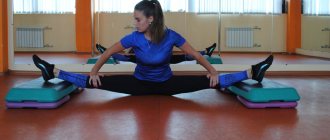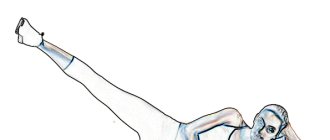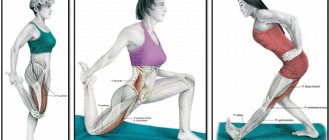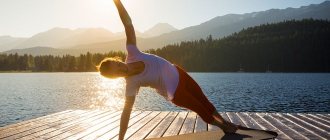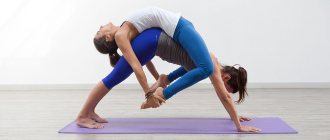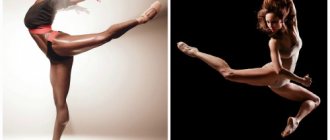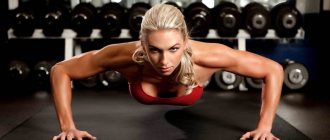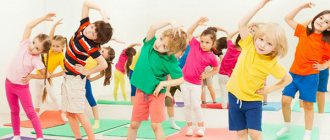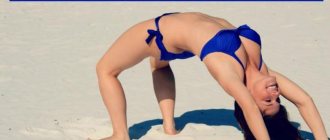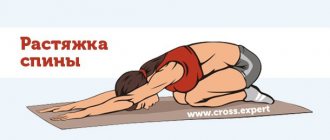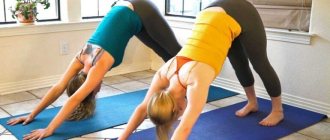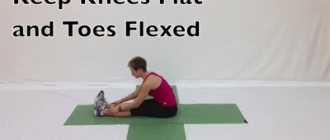Do you want to do ballet? This is a very worthy hobby. Ideally, ballet should be practiced in a special group under the guidance of a professional. But not everyone has this opportunity. In this case, you can study at home.
At the same time, you need to understand that even if you approach the preparation process thoroughly, read a mountain of specialized literature, watch many useful videos, it is unlikely that you will be able to learn ballet at such a level as to perform on stage. But for yourself, for general tone or in order to perform at a party in front of friends, practicing ballet at home is quite possible .
A series of lessons from the Perm ballet school “Fouette”
View this post on Instagram
Publication from BALLET SCHOOL “FOUETTÉ” (FOUETTE) (@fouetteperm)
On the Instagram account of this ballet school you can find 9 full-fledged lessons for practicing at home. The videos are aimed at children from the middle age group or those who are already familiar with the basics of ballet art and are looking for high-quality educational videos.
All lessons in this series are located in the IgTV section and follow the same scenario. A ballerina performs exercises on a mat in the center of the hall to the accompaniment of a piano. There are no comments, and there is no teacher in the frame, so you will have to control the execution technique yourself. The flexibility and skill of the young ballerina in the videos confirms that these classes are not suitable for beginners.
Ballet complex
- Squatting and Lifting
Plie (half-bent) and Releve (raised) develop the Achilles tendon, ankle ligaments and are combined into a set of exercises for the dancer as a single inextricable whole. I. p. one hand on a supporting object, the other on the belt.
Place your legs wider, turn your feet out (heels closed, toes pointing in opposite directions), knees slightly bent. Squat down so that your hips are at the same level as your knees.
In this position for 40 seconds. squat lower and then rise a little higher. Then 40 sec. the same exercise, but now rising and falling on your toes. The pace is calm and slow.
The number of ballet gymnastics exercises can be increased if desired.
2. Isolated back swings
The load is placed on the muscles of the back of the thigh and stretches the iliofemoral ligament. Stand with your left side to the support post, knees slightly bent, heels together, toes apart. Rest your left palm on the support, bend your right hand at the elbow joint and place it on your waist. Pull your right limb back a little so that it rests on the toe on the mat.
Duration 30 sec. do the following: move your leg back until your thigh is horizontal and hold the pose for 1-2 seconds, straining your buttocks; During every second swing, make a circular motion with your foot. Then repeat with the right leg. Duration: 1.5 min. for each leg.
3. Leg raise back
Isolation exercises for the buttocks. I. p. as in the previous exercise. Bend your body forward while keeping your back straight. Lift your right leg back parallel to the floor.
Perform in this position for 40 seconds. the following: moving the leg up and down a few cm; rotation in a circle left and right; one leg squats. Then the same actions are duplicated with an extended toe, followed by a change of legs.
4. Jumping from position No. 1
Stand straight, foot position first. When performing vertical push-offs, we stretch the top of our head upward, but at the same time, deflection in the back is eliminated. Duration – 35-45 seconds. Height is focused on individual natural capabilities.
5. Calf raises from position No. 2
For training the calf and soleus muscles. Stand next to a support, holding onto it with your left hand. Raise your right arm in a bent position above your head. Take the second position. Raise yourself on your toes and lower yourself onto your heels for 35-45 seconds.
Recordings of offline lessons for children 4-6 years old
View this post on Instagram
Posted by Ballet School | Minsk, Almaty (@russian.ballet.studio)
The Minsk school “Russian Ballet Studio” on its Instagram shows in detail the educational process and results of its students. Two videos deserve special attention, which are excerpts from real ballet lessons for children 4-6 years old. This is not an online lesson format where the recipient is the viewer on the other side of the monitor. These are directly parts of classes taking place at school, but filmed from a good angle.
Such videos are useful if a child wants to plunge into the atmosphere of a real ballet lesson, repeat the movements after the students and, in the end, form their own attitude towards ballet. The videos are sped up, so when watching for the first time, your child will probably need help from an adult to do the exercises. Well, the diligence and involvement of young students of the Minsk school can inspire them to attend a trial ballet lesson offline.
M
- Manege (en manege literally means running in a circle) - jumps that are repeated one after another several times, moving in a circle. Often executed as code elements;
- Marche, pas (literal translation - transition) - marching across the stage;
- Marche, pas (verb marcher - move, advance) - light dashes on low half-toes. With this type of running, there is an accentuated movement of the strong part of the leading leg in a half-squat;
- Menus, pas (literal translation - small) - movement, used in minuet. Small steps on low half-toes, performed by groups of three dancers;
Lesson with a ballet dancer from the Bolshoi Theater
It’s been 8 years since this video lesson appeared on YouTube, but young dancers can still learn something new and be inspired by the mentorship example of ballet dancer Ksenia Pchelkina. This lesson was recorded for the Pole dance school, and was structured as a duet between a professional artist and a second-class ballet student. The class takes place in the middle of the dance class; the participants do not use a ballet barre. They move synchronously, positioned opposite each other.
There are no comments on the technique in the video; instead, classical music is played. The lesson will be useful for those continuing their ballet training, and beginners can be inspired by the purity of the dance lines and the grace of the performers.
S
- Ciseaux is the same as pas de ciseaux;
- Saute, temps (verb sauter - to jump) is a term coined by the Moscow school. Means the same as temps leve, a jump on both legs in any position;
- Suivi is the same as pas de bourree suivi;
- Sussous (literal translation - above-under; see also dessus-dessous):
- Leg position in 5th position;
Temps level in 5th position. According to Cecchetti, this is any temps [re]leve; for Vaganova, this is advancement in any direction;
Classic barre lesson for ballerinas from 8 to 12 years old
The Lil Ballerine network of children's ballet schools has its own YouTube channel, Ballet school, where you can find lessons for children of different ages. One of the most viewed videos in educational format is an activity for children 8-12 years old. The video, which lasts almost half an hour, has more than 70 thousand views. This video is the first in a series for this age group.
The lesson is taught by a teacher at the Lil Ballerine ballet school, and a student helps her. The class is dedicated to classical dance and is accompanied by piano. Under the guidance of a teacher, the young ballerina begins the lesson with a bow and warm-up. The teacher monitors the correct execution and gives advice, and due to the fact that the movements are performed at a measured pace, it will not be difficult to repeat them even for beginners.
Then the ballerina and teacher move to the barre, perform plies and bends, and perfect ballet positions. The teacher explains some movements and their combinations to the girl right during the lesson, this is also convenient and understandable for those who are just getting used to ballet.
Perhaps the only thing this online lesson is missing is speakers. The entire lesson takes place at the barre: the ballerina comes out into the middle of the hall only at the beginning and at the end to bow. For methodical and detailed work at the barre, the lesson is good, but for beginner dancers it may seem monotonous. And one more important point - an equivalent result will be obtained if there is a ballet barre or a static support at the required height.
G
- Glissade, pas (verb glisser - to slide) has two meanings:
- jump with advancement. Start and end of movement in 5th position. Performed together with a demi-plie on one leg, at the moment when the second one opens in any direction in a slide. Afterwards, the dancer performs a small jump and fixes the 2nd or 4th position in the air and moves towards the leg that opens. Used as an approach for other jumps with amplitude depending on the strength of the planned jump;
- opening one leg to the side in a demi-plie, followed by a step on the half toes and pulling the second leg into the 5th position.
- Grand (large) – a prefix that is used to determine the maximum amplitude of movements during performance: grand plie, grand pirouette, grand battement jete, grand passaute, grand pas dechat, etc.;
- Grand pas - in classical ballet - a complex form that consists of the dancers entering, alternating changes of soloists and corps de ballet, and a final coda. Examples: grand pas from “Don Quixote”, “Paquita”, etc.;
“The competition is the result of what we do”
Participation in competitions is a very important stage in the development of an artist, professional or non-professional, therefore children from the Ilze Liepa Studio School often participate in them. In order to provide an incentive to study, the competition is very important, because different teams come there, both strong and weak. Seeing how other people work makes children more interested.
“At competitions you need to be able to gather yourself as much as possible. We had children who, it would seem, were not very ready for such events, but they gathered on stage, showed good results, and then began to work even better in class. Competitions are a certain result of what we do,” says Elena Baryshnikova.
Students from the school in Zhukovka took part in competitions four times, and all four times there were good results: in Spain they won the Grand Prix twice, and recently they became the best at the “Pearl of the Orient” competition-festival in China.
“I only praise those who are not at all confident in themselves”
There are no children who are passionate about dance without passionate teachers. “When teaching classical dance, you must love children madly. If you love them, they will take knowledge from you,” admits Valentina Gorskaya. – I have been teaching for 19 years, during which time I have learned to sort children. He came - and I immediately see: this one immediately perceives, we need to work with this, we need to be more kind with this, and more strictly with this.
Sometimes I see that a child is not doing well, but I tell him: “Today you are doing great!” And you look - he pulled himself up, felt warmth and attention, and then he succeeds. But in general it’s not easy. Children take everything from you. You come home like a rag. But I absolutely love this school,” shares Gorskaya.
In turn, choreographer Elena Baryshnikova prefers that lessons are always fun, even if you have to scold the children. “I only praise those who are completely incapable and lack self-confidence. I scold the rest,” she says. “The main thing is that they are interested, because this is the only incentive for people who are not trained to be professionals in this matter.”
Systems involvement
The proposed physical training does not require sports equipment. However, during the training process, it is important to take a meaningful approach to actions, since correctly distributing muscle strength during the dancing process and maintaining tone automatically is an absolutely necessary skill. Here, the interaction of various sensory systems plays an important role: motor, visual, auditory, vestibular, tactile. Self-control over the activity of individual parts of the body and the form it takes is necessary.
